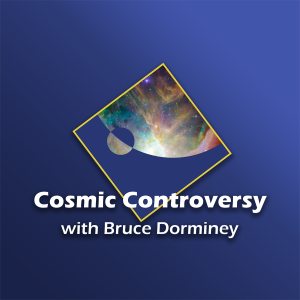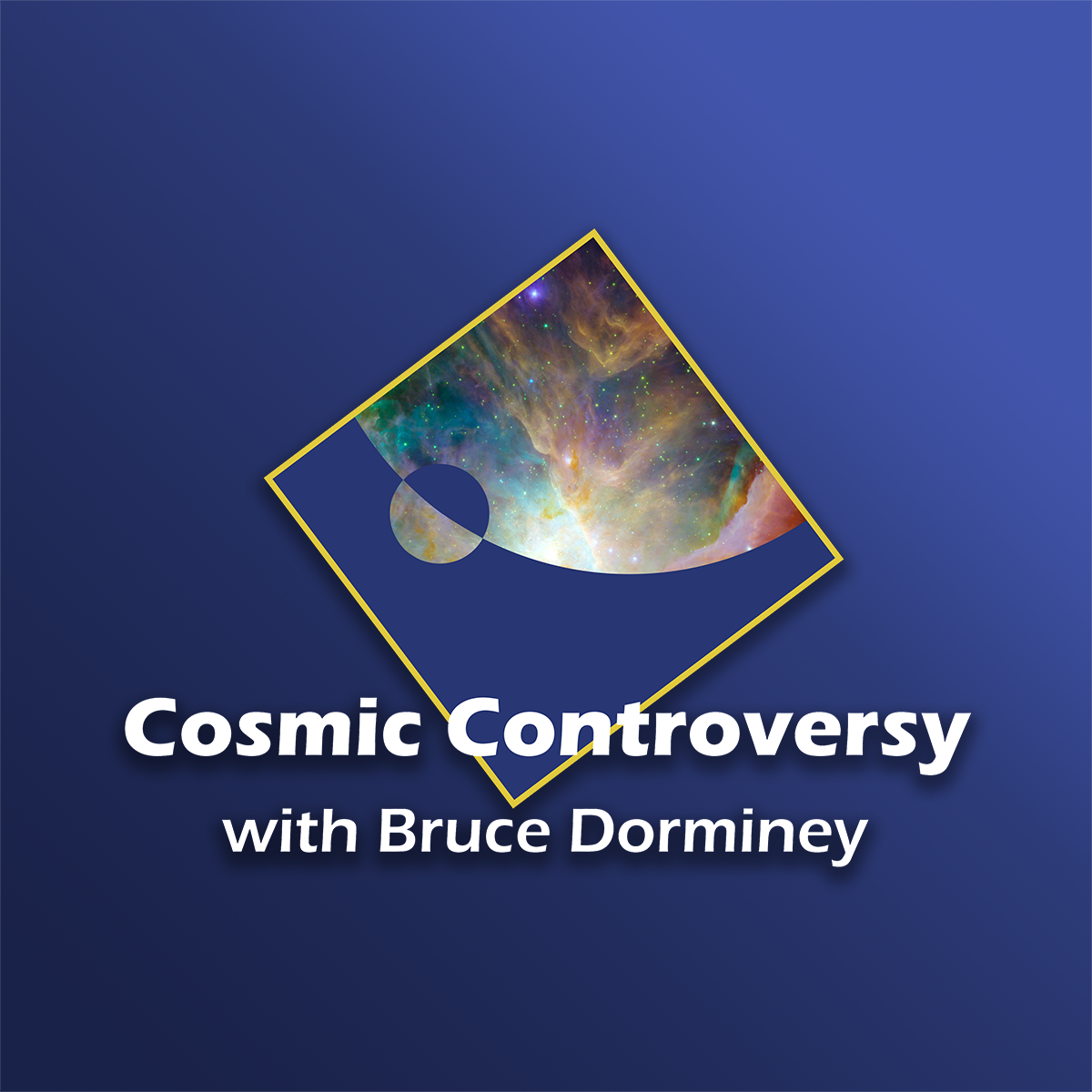Episodes

Friday Sep 25, 2020
Episode 17 --- How We All Got Here --- Galaxy Evolution over Cosmic Time
Friday Sep 25, 2020
Friday Sep 25, 2020
For anyone who’s ever wondered how our own star happened to be caught up in the midst of a grand spiral beauty like our Milky Way, this episode should at least provide some clues. It’s a big cosmological subject and of course, we just skim the surface but for those curious as to how galaxies formed after the Big Bang to become home to oh so many stars, this podcast episode should be of interest. This week’s guest, Francesca Rizzo, a doctoral candidate at Germany’s Max Planck Institute for Astrophysics in Garching, discusses the current state of how galaxies formed and developed over cosmic time.

Friday Sep 18, 2020
Friday Sep 18, 2020
Fast Radio Bursts (FRBs) have hogged the headlines for the last decade or so; prompting many news organizations to question whether they are produced by far-flung alien civilizations in the midst of some sort of bizarre intergalactic transport mechanism. The truth however is likely much more mundane; they could be flashes from Hawking’s storied evaporating black holes or colliding neutron stars or something we have simply failed to imagine. But in this podcast episode, Duncan Lorimer, their co-discoverer, at West Virginia University (WVU) in Morgantown, gives us the straight scoop on what they most likely are and aren’t. Great episode!

Friday Sep 11, 2020
Friday Sep 11, 2020
Amelia Earhart, arguably the most famous woman in the world at the time of her 1937 disappearance, was on a second attempt to fly around the world when something went horribly wrong. However, what actually happened to the famed aviator and her navigator Fred Noonan may finally be close to being solved. Or so says Chasing Earhart Project Director Chris Williamson in this fascinating episode in which we cover all the viable theories surrounding the Earhart mystery.

Friday Sep 04, 2020
Episode 14 --- Does the Dwarf Planet Ceres Harbor Life?
Friday Sep 04, 2020
Friday Sep 04, 2020
This week's guest is NASA Dawn project scientist Julie Castillo-Rogez who led the hugely successful robotic mission on the first in-depth look at the asteroid Vesta and the dwarf planet Ceres. Castillo talks about why there's a growing consensus that Ceres may have long had habitable subsurface conditions and why we need a sample return mission to launch in 2033. We also discuss Mars' moons of Deimos and Phobos and the first interstellar asteroid, Oumuamua.

Friday Aug 28, 2020
Friday Aug 28, 2020
Lowell Observatory astronomer Gerard van Belle, Chief Scientist at the Navy Precision Optical Interferometer (NPOI) in Flagstaff. Arizona talks about the possibility of arrays of space telescopes that are 3-D printed after launch. We also discuss the history of optical interferometry; why such interlinked telescopes are the key to America’s future in astronomy and why Arizona skies remain as vital today as they were a century ago.

Thursday Aug 20, 2020
Episode 12 --- Understanding Potential Alien Technosignatures
Thursday Aug 20, 2020
Thursday Aug 20, 2020
This week’s guest is Adam Frank, a professor of physics and astronomy at the University of Rochester in New York, who has received the first-ever NASA grant to begin cataloging potential alien techno-signatures in a non-radio spectrum. The hunt for potential alien technology is one of the sexiest topics in astrophysics at the moment and Frank doesn’t disappoint. We cover everything from how we might find such technology in our own solar system to super-advanced civilizations that might harness supermassive black holes for cosmic scale supercomputers.

Friday Aug 14, 2020
Friday Aug 14, 2020
In a stroke of serendipity during a wide-ranging podcast interview, Villanova University astronomer Edward Guinan explains the paper behind today's news flap about the red supergiant star's inexplicable dimming. The most recent explanation is that dust generated from cooling plasma spewed forth from the massive star's interior caused Betelgeuse to appear more dim than usual. While Guinan acknowledges this scenario is a possibility, he remains skeptical. Please listen to this candid and entertaining episode!

Friday Aug 07, 2020
Episode 10 --- Why Mars Remains So Misunderstood
Friday Aug 07, 2020
Friday Aug 07, 2020
Three spacecraft are currently en route to Mars, but none will visit the poles. Yet Mars’ poles drive much of the Martian climate. And their understanding is key to deciphering what might have been happening on the Red planet some 3.5 billion years ago when it had lakes, deltas, rivers, and perhaps even transient oceans. I’m very pleased to welcome planetary scientist Isaac B. Smith of York University in Toronto --- an expert on Mars polar science and exploration --- to discuss the need for a Martian polar lander as well as a broader look at Mars science.

Friday Jul 31, 2020
Friday Jul 31, 2020
Dutch astronomer Anthony Brown of Leiden University explains how the European Space Agency's GAIA satellite is revolutionizing what we know about the Milky Way. This all-sky survey mission revisits each target 70 times over the course of the years-long mission to give astronomers a real 3-D map of a large swath of our galaxy. Highlights include why are Milky Way is warped, the potential origins of our solar system's formation, and why Gaia is important to planet hunters. The next big data drop is scheduled by year's end. My apologies to those who listened to an earlier version of this; there was a technical glitch with music interference halfway through which has now been resolved. Thanks for listening!

Friday Jul 24, 2020
Friday Jul 24, 2020
When first conceived, the 6.5 meter James Webb Space Telescope was all about galaxy surveys, the deep sky, and cosmology; it still is. But it’s also about solar system science in surprising ways. This infrared behemoth will virtually revolutionize the way we view asteroids, comets, and Kuiper Belt objects in the far reaches of our frozen outer solar system. This episode’s guest --- Stefanie Milam --- is the Webb telescope’s deputy project scientist for planetary science and gives us all the details on why the telescope is such a complicated piece of hardware and why it will also give us some of the best maps of Mars than anyone could hope.

